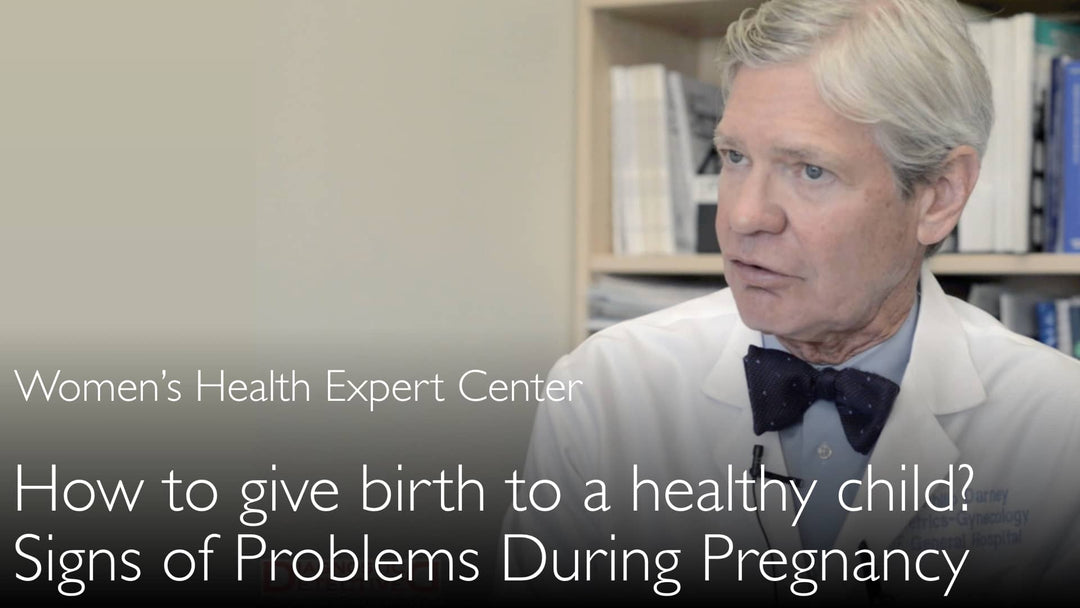Leading expert in obstetrics and gynecology, Dr. Philip Darney, MD, explains key strategies for a healthy pregnancy and safe delivery, emphasizing planned conception, toxin avoidance, prenatal care, and early detection of complications like preeclampsia and gestational diabetes to reduce risks of prematurity and neonatal health issues.
Essential Steps for a Healthy Pregnancy and Safe Delivery
Jump To Section
- Planning Pregnancy for Better Outcomes
- Avoiding Toxins During Pregnancy
- The Critical Role of Prenatal Care
- Recognizing Signs of Preeclampsia
- Managing Gestational Diabetes Risks
- Breastfeeding for Newborn Health
- When Hospital Care Becomes Essential
- Full Transcript
Planning Pregnancy for Better Outcomes
Dr. Philip Darney, MD, stresses that planned pregnancies significantly reduce risks of prematurity, the leading global cause of early neonatal death and pregnancy loss. Contraception use allows conception when maternal health is optimized. Planned pregnancies enable women to address chronic conditions, nutritional status, and lifestyle factors before conception, creating the best possible environment for fetal development.
Avoiding Toxins During Pregnancy
Eliminating alcohol, tobacco, and environmental toxins is crucial for fetal health, explains Dr. Darney. These substances can disrupt organ development and lead to birth defects or growth restrictions. Even moderate alcohol consumption increases risks of fetal alcohol spectrum disorders, while smoking raises chances of low birth weight by nearly 50% according to CDC data.
The Critical Role of Prenatal Care
Regular prenatal visits allow early detection of complications, with Dr. Darney noting they should begin as soon as pregnancy is confirmed. Monitoring includes blood pressure checks (critical for catching preeclampsia), weight tracking, and fetal growth assessments. The American College of Obstetricians recommends at least 14 prenatal visits for low-risk pregnancies, with more frequent monitoring for high-risk cases.
Recognizing Signs of Preeclampsia
Dr. Philip Darney, MD, identifies rising blood pressure and protein in urine as key preeclampsia warning signs, typically emerging in late second or third trimester. This dangerous condition affects 5-8% of pregnancies globally. Regular blood pressure monitoring can detect concerning trends before symptoms appear, allowing early intervention to prevent eclampsia (seizures) or HELLP syndrome.
Managing Gestational Diabetes Risks
Screening for gestational diabetes between 24-28 weeks is vital, notes Dr. Darney. This temporary condition affects up to 10% of pregnancies and can cause excessive fetal growth. Tight glucose control through diet, exercise, and sometimes medication prevents complications like birth injuries from macrosomia (oversized babies) and reduces future type 2 diabetes risks for both mother and child.
Breastfeeding for Newborn Health
Dr. Philip Darney, MD, emphasizes breastfeeding's proven benefits, including stronger immunity and reduced infection risks. WHO recommends exclusive breastfeeding for six months, with continued breastfeeding alongside solids for two years or more. Breast milk provides ideal nutrition and antibodies while reducing risks of obesity, asthma, and SIDS (sudden infant death syndrome).
When Hospital Care Becomes Essential
Certain pregnancy complications require hospital-based management, explains Dr. Philip Darney, MD. Severe preeclampsia may need magnesium sulfate to prevent seizures and early delivery. Preterm labor might require corticosteroids to accelerate fetal lung development. Having a high-risk pregnancy care plan ensures rapid response to emerging complications that threaten maternal or fetal wellbeing.
Full Transcript
Dr. Anton Titov, MD: What can a woman do to ensure that her child is born healthy? What can a woman do to make sure her baby stays healthy in early infancy and beyond?
Dr. Philip Darney, MD: The health of the baby is determined in large part by the health of the woman herself. We mentioned some of the things a woman can do to be healthy for her pregnancy. Perhaps the most important health advice is to plan the pregnancy.
All around the world, the principal cause of early neonatal death and pregnancy loss is prematurity. Planned pregnancies are less likely to be born premature. So the use of contraception in order to plan a pregnancy is important. Then the pregnancy comes when the woman wants it to come.
The avoidance of toxins is important. Do not use alcohol or tobacco. Exposure to environmental toxins is important to avoid. A woman must preserve the health of the newborn.
Seeking prenatal care is important. Breast-feeding has been shown to result in babies who are more resistant to infection. Breast-fed babies grow up healthier. So breastfeeding for as long as possible is an important aspect of good care for the newborn baby.
Then there are special situations where hospital care is required. The type of care received only in the hospital might be important. For example, the development of preeclampsia can be treated. Preeclampsia is high blood pressure that develops during the later stages of pregnancy.
Screening for diabetes is important. A woman who develops diabetes during pregnancy receives treatment to avoid excessive weight gain in herself and in the fetus. That can be an important aspect in pregnancy management.
I would say there are several critical factors for a healthy pregnancy. It is important to plan a pregnancy and avoid outside toxins. They can adversely affect the development of the baby.
Dr. Anton Titov, MD: You mentioned preeclampsia. It is a very important risk factor for the health of pregnant women. What are the signs of preeclampsia that the woman should know and recognize?
Dr. Philip Darney, MD: That's why prenatal care is important. Because rising blood pressure is the critical problem during pregnancy. Protein in the urine and excessive weight gain may happen toward the latter part of the second trimester of pregnancy.
Regular prenatal visits and documentation of expected fetal growth during pregnancy are both important.
Dr. Anton Titov, MD: This is a very important point, because some of the symptoms could develop quite late in the pregnancy. But high blood pressure can be caught by health professionals before it develops into such a significant problem as preeclampsia.
Dr. Philip Darney, MD: Yes. Two good examples are hypertension during pregnancy and the development of gestational diabetes.
How to give birth to a healthy child? What are signs of high-risk pregnancy, preeclampsia, gestational diabetes? Regular prenatal visits find early warning.




